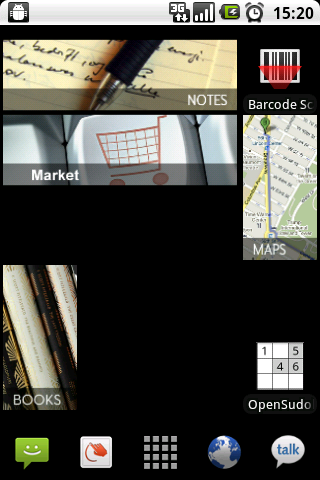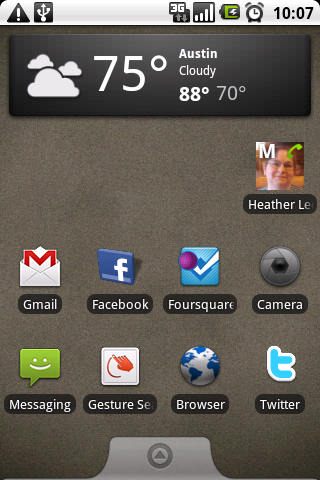Let’s see if it looks as good as it should, out of the box.
Working on reposted text
Nolite Te Bastardes Carborundorum
Trying out Tumblr
Not that I update this site that often, but I’ve started using Tumblr for my medium- and large-format blogging. Check it out at http://tumblr.devlogic.org/
If I like it enough, I may even retire this site completely (some DNS magic will definitely keep this address pointed at whichever site gets new content, guaranteed).
Test QuietWrite Post
I discovered quietwrite.com the other day. Probably through Lifehacker, but I have quite honestly forgotten. I like the concept: somewhere to write, with autosaves and options for publishing later if you so desire.
I’ve fallen out of the “long-format blog post” habit, seemingly preferring Twitter-style short-format updates. But maybe something like this (which also, incidentally, works on the iPad) might be just what I need.
I wonder if it’ll work on my Android tablet?
hmm. seems easy enough. now to find a way to not go pulling-out-my-hair crazy trying to reliably type on this horrible keyboard.
Bored and on the Internet
Because I have nothing better to do, my current Android home screen layout:



Enabling SSH on Dell PowerConnect Switches
Because I had so much trouble finding this information.
If you’ve already got telnet set up, and your config includes a line like
username admin password 123487123458134789561278561927845 level 15 encrypted
Then you’re already very close. Only two steps remain between you and SSH console access.
- crypto key generate dsa (or rsa)
- ip ssh server
That’s it! Don’t bother with the instructions that you might find in the user guide for “configuring an initial SSH console password” that have you mess with aaa authentication default line and the like. They’re red herrings.
Android? Android!
*pffffff* Wow, that’s a lot of dust.
I bought an Android phone last year. A T-Mobile MyTouch 3G, which is a rebranded HTC Magic 32b. I like it a lot, even though about 2 months later the Nexus One was released. It’s become my primary pocket-based internet device; Heather inherited my old 1st-gen iPod Touch. Being the huge geek that I am, I’m surprised I waited the week that I did before I voided the warranty, got root, and installed a “mod”. Mostly because I could, but also partially to gain some performance and features that weren’t available on the stock ROM.
So let’s look at that. My phone came with Android 1.5 (Cupcake), but T-Mobile had already released the OTA (over-the-air) update to 1.6, so I never really experienced 1.5, which I hear is a good thing. 1.6 looks like this:
I used this version of Android (stock, with some rearranged icons) for about a week, and then I hacked my phone, and installed CyanogenMod 4.1.9999. That gave me root access, an easy-to run terminal emulator, and tethering (which I’ve used exactly once, to make sure it worked). I also called T-Mobile at some point and got the subsidy unlock code for my phone, so that I could use other providers’ SIM cards when I’m in T-Mobile dead zones. CyanogenMod, through 4.2.15.1 (the latest stable release as of today), looks virtually identical to “stock” 1.6. It’s got some neat features, like an improved dialer and lots of technology/backend ports from Eclair (Android 2.1). About a month (6 week, maybe?) ago, Cyanogen released a test version of CyanogenMod 5.0.7 for my phone, and I snapped it up. Early adoption of technology is definitely for me. 5.0.7 is a port of Eclair (Android 2.1) to the Dream and Sapphire hardware (those are the production names that HTC used for the G1 and MyTouch 3G). There’s stuff missing in this port from the full release of 2.1 that’s on the Nexus One or Droid (the 3d launcher is the most obvious, but there are others), but it’s very nearly feature-complete. And I think it’s good stuff. 5.0.7-test5 came out last night, and it’s the first -test version that I’ve run that I’ve not felt the need to enable swap space for. Things are snappy, I haven’t seen any bugs that aren’t already being worked on, and I get to use things like the official Twitter for Android app (which only works on 2.0+). By and large, though, the screen hasn’t changed all that much. Here’s what my current “home screen” looks like:
And really? It looks pretty much the same. I don’t go out of my way to make my phone flashy (although it’s definitely capable of that); I go for functional. I use everything on the home screen on a daily basis, and things launch nice and fast, operate as I expect, and then stay out of my way.
End result? If you have an older Android phone, like the T-Mobile G1 or the MyTouch 3G, and don’t mind voiding your warranty, think about moving to CyanogenMod. It’ll be worth your while, especially if you want to use new features (and not wait for an official 2.1 upgrade, which may never arrive).

